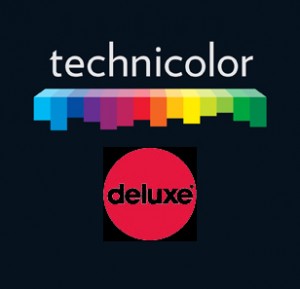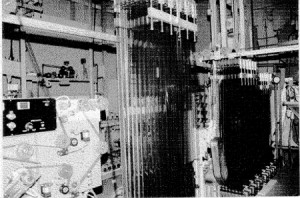 Since Monday I’ve had a minimized Firefox window open in my dock, with this THR story about the rotation of services between Technicolor and Deluxe. I’ve been putting off writing about it, but today when I noticed Ebert tweeted a similar Variety story (that apparently beat THR) I figured it was time to take a look and get it out there.
Since Monday I’ve had a minimized Firefox window open in my dock, with this THR story about the rotation of services between Technicolor and Deluxe. I’ve been putting off writing about it, but today when I noticed Ebert tweeted a similar Variety story (that apparently beat THR) I figured it was time to take a look and get it out there.
For years now we’ve hard about the decline of film and the ascendancy of digital in both the capture and exhibition fields of the industry. The arguments against the death of film seem positively quaint these days, as new sensors and cameras from companies like RED and Alexa [sorry guys, ARRI is the company and “Alexa” is the new blowjob of a camera- dumb mistake!] keep making converts of even the most entrenched filmmakers. If film seemed to dwindle without too much of a fight in the capture arena though (something like half of features shot across the world are now digital), that’s to say nothing of projection, where it has very quickly become a digital projector’s game. 3D helped push this along faster, but the easier distribution methods for the studios spelled out the inevitability of the shift long ago. Currently North American screens sit at about half-digital/half-film projection, and that number will only lean further towards the former as time goes on.
But these are all statistics that have been reported on for years and death knells that have been hyped by plenty– it’s the more subtle background signs that really show you what’s happening. You may not hear about it on the front page, but when the big guns in the photochemical world start massively restructuring their business model, and trading business…
 Basically it boils down to this: Deluxe and Technicolor are the two big boys in the photochemical film printing game, meaning that when movies need the thousands of prints made for a wide release, these guys do that manufacturing. Granted, this is only a small part of the business of each company (they offer color mastering services, archiving, digital production packages, that sort of thing…), but now that demand for film prints has shrunk so much in North America and to a less dramatic extent, Europe, the two rivals have made a deal. Essentially they’ll be hiring each other and trading off printing business so that Technicolor will no longer strike 35mm prints for North America, while Deluxe will no longer handle the physical distribution (shipping/trucking) of prints in North America. This basically means the two companies are ceding one part of the pipeline to each other, dropping the competition, and simplifying their overall operations. Writing on the wall: they’re agreeing to carve up what little profits remain peacefully, rather than competing themselves out of any revenue at all.
Basically it boils down to this: Deluxe and Technicolor are the two big boys in the photochemical film printing game, meaning that when movies need the thousands of prints made for a wide release, these guys do that manufacturing. Granted, this is only a small part of the business of each company (they offer color mastering services, archiving, digital production packages, that sort of thing…), but now that demand for film prints has shrunk so much in North America and to a less dramatic extent, Europe, the two rivals have made a deal. Essentially they’ll be hiring each other and trading off printing business so that Technicolor will no longer strike 35mm prints for North America, while Deluxe will no longer handle the physical distribution (shipping/trucking) of prints in North America. This basically means the two companies are ceding one part of the pipeline to each other, dropping the competition, and simplifying their overall operations. Writing on the wall: they’re agreeing to carve up what little profits remain peacefully, rather than competing themselves out of any revenue at all.
Naturally this comes with some job losses, and the story gets more complicated outside of North America where Technicolor is essentially taking over printing in the U.K. and Thailand. Neither company is particularly bashful about pointing to digital technology as the reason for the changes to their not-even-100-year-old-models…
“Today’s agreement with Technicolor is the result of significant changes in our industry enabled by new digital technologies causing the rapid transition from film to digital,” said Cyril Drabinsky, president and CEO of Deluxe. “This agreement will help maintain a high consistency of service for our customers through the remaining life of film.”
It is nice to note that Technicolor will be retaining their 65/70mm print arm (sweet, delicious real IMAX) though moving it to a new facility.
So what’s this mean to you? Little, unless you’re one of a few hundred losing their jobs. Your theater experience has likely already undergone the shifts that have caused this, and if not… it will soon. Beautiful digital cinematography is accomplished everyday, and film won’t be 100% fully retired until we really have moved all the way past it, so don’t shed too many tears.
If there’s anything to cry over, it’s that one day we may lose the experience of those revival screenings with terribly beat-up, charming leftover prints of old films. The 80s horror flicks and underground nasties. The thing is though… I’ve seen how a classic like The Exorcist looks when it has been digitized as a high-quality, restored digi-print, and I must say that’s a future I’m not too scared of.
Film’s not gone, but its days are numbered. It’s taken us a long way, so at the very least its passing should be observed with respect, but with a hopeful eye towards the future of the tools that empower filmmakers to bring us so much joy.